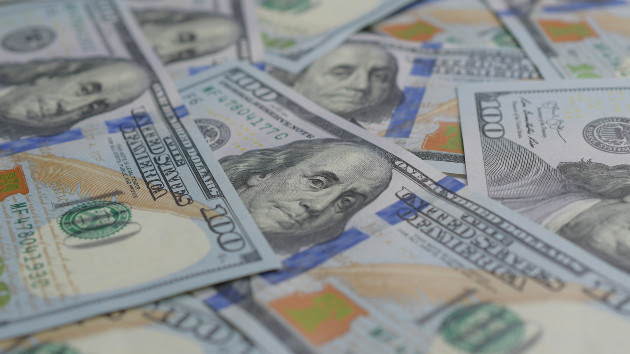(WASHINGTON) — A ticking clock in Washington to avert default by raising the nation’s borrowing limit is drawing attention to the $31.4 trillion debt already accrued by the United States government.
The country hit its current debt ceiling in mid-January and is expected to run out of cash to be able to pay all its bills as soon as June 1, Treasury Secretary Janet Yellen has warned Congress, while cautioning that the exact “X-date” for default remains fluid.
As President Joe Biden and leading lawmakers including House Speaker Kevin McCarthy work to hammer out a deal, here’s what to know about how the U.S. amassed its debts so far:
What is the national debt?
Nearly every year, the government spends more than it collects in taxes and other revenue, resulting in a deficit. (The debt ceiling, set by Congress, caps how much the U.S. can borrow to pay for its remaining bills.) The national debt, now at a historic high, is the buildup of its deficits over time.
Only five times in the past half century has the U.S. run a surplus, the most recent being in 2001.
“Each side of the political aisle can blame the other, but the debt is mathematically just a mismatch,” Kent Smetters, a professor at the University of Pennsylvania’s Wharton School of business who formerly worked at the nonpartisan Congressional Budget Office, told ABC News.
The U.S. has had debt since its founding and has only been completely debt-free once, in 1835.
How did it grow to $31.4 trillion?
The national debt has grown significantly since the early 1980s under both Republican and Democratic administrations.
The largest percentage increases to the debt occurred under Presidents Ronald Reagan and George W. Bush, both of whom enacted tax cuts that led to large deficits.
Flashpoints that greatly contributed to the debt over the past 50 years include the wars in Iraq and Afghanistan, the 2008 financial crisis and the 2020 COVID-19 pandemic — the latter two prompting sweeping stimulus measures from Congress that cost trillions of dollars.
“Some of the debt is definitely policy-driven, such as in the case of tax cuts. Some of it’s reactive: We had a pandemic, we had a financial crisis, and the government’s going to take a position and step in,” said David Thomson, the director of Sacred Heart University’s history program, who has written about the U.S. debt.
“When you add all those things up, it leads to some pretty significant chunks of change. And that’s gotten us up to that $31.4 trillion mark,” Thomson said.
Who owns the debt?
Much of the debt — $24.6 trillion — is held by the public in the form of financial securities issued by the Treasury Department. Another $6.8 trillion is held by various parts of the U.S. government.
The public debt is held by individuals, corporations, foreign nations and entities, state or local governments and Federal Reserve Banks.
The amount of publicly-held debt has doubled over the past decade, Smetters said, and is considered by many economists to be the most important measure of debt.
Will the debt keep growing?
One model from Wharton estimates that if the government wanted to balance its budget sheets, it would have to either permanently and immediately reduce spending or increase tax revenue.
All spending, including for popular programs like Social Security, Medicare and Medicaid, would need to be slashed by 30%, according to the Wharton model. Or the federal government could permanently increase all sources of federal tax revenue by roughly 40%.
“Or some combination of the two,” Smetters said. “Right now, the discussions happening in Washington on both sides are so far away from the actual math of what needs to happen. They’re still dancing around some much bigger issues.”
However, many economists believe some government debt is a good thing. Thomson noted that growing public debt speaks to the fact that many view U.S. bonds and and other securities as among the safest assets in the world.
Copyright © 2023, ABC Audio. All rights reserved.












